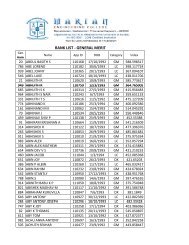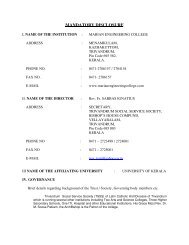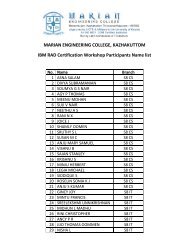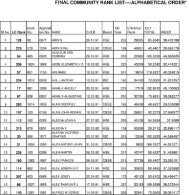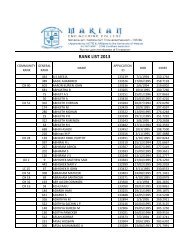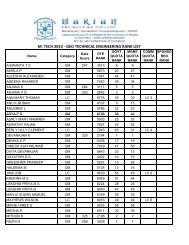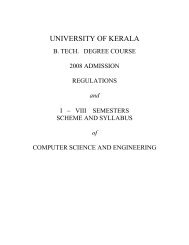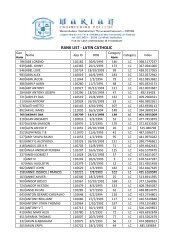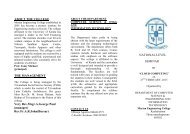UNIVERSITY OF KERALA - College of Engineering, Trivandrum
UNIVERSITY OF KERALA - College of Engineering, Trivandrum
UNIVERSITY OF KERALA - College of Engineering, Trivandrum
Create successful ePaper yourself
Turn your PDF publications into a flip-book with our unique Google optimized e-Paper software.
08.806.6 Elective-IV PROBABILISTIC METHODS IN<br />
CIVIL ENGINEERING<br />
L T P/D Cr<br />
3 0 0 3<br />
Review: Probability, Sample space and events, Axioms <strong>of</strong> probability.<br />
Module I<br />
Uncertainties in engineering – aleatory and epistemic uncertainties. Modelling <strong>of</strong> uncertainties, Random events,<br />
Total probability and Baye’s theorem, Independence <strong>of</strong> events, Random variables, Discrete and continuous<br />
random variables, probability distribution and density functions – properties, Main descriptors <strong>of</strong> a random<br />
variable – central values, Mathematical expectation, Measures <strong>of</strong> dispersion, Measure <strong>of</strong> skewness, Kurtosis.<br />
Uniform, normal and lognormal distributions.<br />
Module II<br />
Moments <strong>of</strong> a random variable, moment generating functions, multi-dimensional random variables, Joint<br />
probability distribution, conditional and marginal distribution, covariance and correlation. (Problems on<br />
bivariate random variables only).<br />
Functions <strong>of</strong> random variables – function <strong>of</strong> a single random variable, functions <strong>of</strong> two random variables,<br />
Moments <strong>of</strong> functions <strong>of</strong> random variables.<br />
Module II<br />
Role <strong>of</strong> probability and statistics in civil engineering, Frequency analysis – estimation <strong>of</strong> probability <strong>of</strong><br />
exceedence, Return period <strong>of</strong> extreme events such as flood and earthquake- Weibull’s formula, Estimation <strong>of</strong><br />
characteristic compressive strength from sample values.<br />
Structural Reliability, Performance function and limit surface, Margin <strong>of</strong> safety, First Order Reliability methods<br />
(FORM) –Cornell’s reliability index – Limitations, Geometric interpretation <strong>of</strong> reliability index – Has<strong>of</strong>er Lind<br />
reliability index (Concept only, no numerical problems).<br />
Concept <strong>of</strong> Monte Carlo Simulation, Introduction to reliability based design – Determination <strong>of</strong> partial safety<br />
factors (qualitative ideas only).<br />
References:<br />
1. A.H.S. Ang and W.H. Tang, Probability Concepts in <strong>Engineering</strong>, John Wiley&Sons Inc.<br />
2. R. Ranganathan, Structural Reliability- Analysis and Design, Jaico Publishing House, Mumbai.<br />
3. A.S. Nowak, K.R. Collins, Reliability <strong>of</strong> Structures, McGraw Hill, Boston.<br />
4. A. Papoulis and S.U. Pillai, Probability, Random Variables and Stochastic Process, Tata McGraw Hill,<br />
New Delhi.<br />
5. Sheldon Ross, A first course in Probability, Pearson Education.<br />
6. P. Jayarami Reddi, A text book <strong>of</strong> Hydrology, Laxmi Publiscation (Pvt) Ltd, New Delhi.<br />
Question Paper: Duration: 3 hours<br />
The Question paper contains Part A and Part B.<br />
Part A carries 8 compulsory questions (short answer questions) covering the entire syllabus and is for 40 marks.<br />
Part B is for 60 marks. There will be two questions from each module. The candidate has to answer one<br />
question out <strong>of</strong> two.<br />
100



